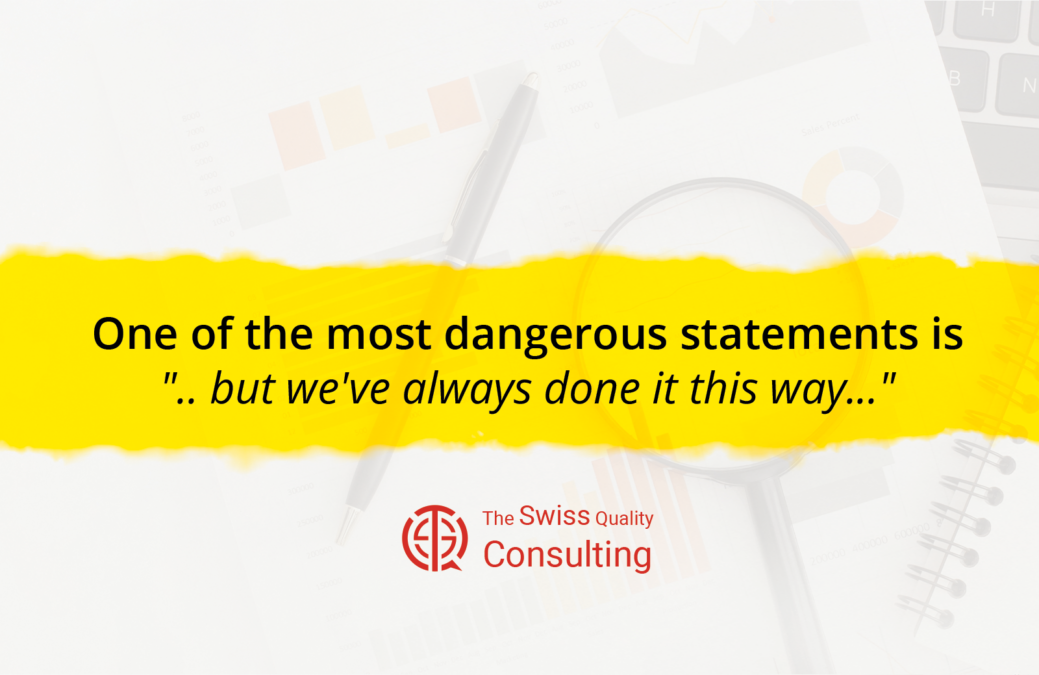The Pitfall of Tradition: Challenging the Status Quo
In the ever-evolving landscape of human existence, the phrase “but we’ve always done it this way” can be one of the most dangerous statements we encounter. While tradition can provide a sense of stability and continuity, blindly adhering to past practices without questioning their relevance or effectiveness can hinder progress and growth. In this exploration, we will delve into the potential pitfalls of clinging to tradition and why it’s important to embrace change when necessary.
Tradition, in its essence, is the passing down of customs, beliefs, and practices from one generation to the next. It forms the foundation of cultural identity and provides a sense of connection to our heritage. However, when tradition becomes a rigid and unquestionable force, it can stifle innovation, hinder adaptation, and limit our capacity for improvement.
Here are some reasons why the statement “but we’ve always done it this way” can be perilous:
1. Resistance to Change: Tradition often resists change by its very nature. When we rely on the past as the sole basis for decision-making, we can become resistant to adopting new ideas and approaches.
2. Outdated Practices: The world is in constant flux, and what worked in the past may no longer be applicable or efficient. Clinging to outdated practices can hinder progress and limit our ability to address contemporary challenges.
3. Missed Opportunities: Innovation and improvement are often born out of the willingness to question tradition and seek better alternatives. Holding on to the status quo may cause us to miss opportunities for growth and development.
4. Reinforcement of Inefficiency: Just because something has been done a certain way for generations doesn’t necessarily mean it’s the most efficient or effective method. Relying on tradition may perpetuate inefficiencies.
5. Closed-mindedness: The statement “we’ve always done it this way” can reflect a closed-minded attitude that dismisses new perspectives and creative solutions.
6. Lack of Adaptability: In a rapidly changing world, adaptability is a valuable trait. Tradition can impede our ability to adapt to new circumstances and challenges.
While it’s crucial to acknowledge the importance of tradition in preserving cultural heritage and identity, it’s equally important to recognize that not all traditions are sacrosanct. Here’s how we can strike a balance:
1. Critical Evaluation: Encourage critical evaluation of traditions to determine their continued relevance and effectiveness.
2. Open Dialogue: Foster open and respectful dialogue about the need for change or adaptation within a given tradition.
3. Incorporate Innovation: Embrace innovation and creativity while respecting the core values and principles of a tradition.
4. Preserve Cultural Identity: Find ways to preserve cultural identity and heritage while adapting to modern realities.
5. Embrace Progress: Recognize that progress and change are natural aspects of human existence and should not be feared but embraced when necessary.
6. Honoring Core Values: While traditions may evolve, it’s important to honor the core values and principles that underpin them.
The statement “but we’ve always done it this way” should serve as a reminder to critically evaluate our traditions and practices. Tradition has its place in preserving cultural identity and providing a sense of continuity, but it should not be an obstacle to progress or innovation. By embracing change when necessary and approaching tradition with an open mind, we can strike a balance that allows us to honor our heritage while moving forward in a constantly changing world.
#Tradition #Innovation #Change #Adaptability #CulturalIdentity









